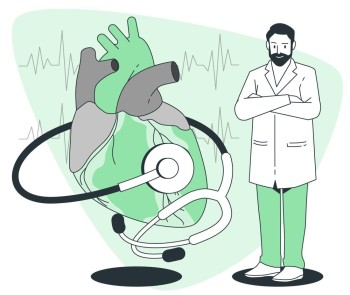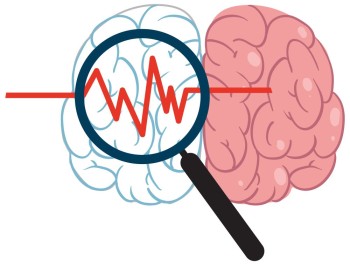
Embark on a journey through the intricate world of renal vascular imaging with our comprehensive guide on MRI Renal Angiography.
MRI Renal
Angiography with Cost
MRI Renal
Angiography: Illuminating Renal Vascular Health
Embark on a journey through the intricate world of renal vascular imaging with our comprehensive guide on MRI Renal Angiography. Uncover the significance of this non-invasive procedure, exploring renal vascular anatomy, clinical implications, and the advanced imaging sequences that make it a pivotal diagnostic tool.
1. Introduction
Renal vascular health is paramount for overall well-being, and MRI Renal Angiography stands at the forefront of diagnostic techniques, offering detailed insights into the intricate renal vascular network.
2. Importance of MRI Renal Angiography
2.1. Renal Vascular Anatomy
Understanding the complexity of renal vascular anatomy is crucial for grasping the diagnostic capabilities of MRI Renal Angiography. This imaging modality allows for precise visualization of the renal arteries and veins, ensuring a comprehensive assessment.
2.2. Clinical Significance
The clinical significance of MRI Renal Angiography extends to identifying various renal vascular conditions, aiding in timely diagnosis and intervention.
3. Procedure of MRI Renal Angiography
3.1. Patient Preparation
Patients undergoing MRI Renal Angiography need to adhere to specific preparation guidelines, including dietary considerations and the removal of metallic objects.
3.2. Imaging Process
The imaging process involves the patient lying down in the MRI machine, where advanced sequences capture detailed images of the renal vasculature. Different MRI sequences may be employed to provide a comprehensive evaluation.
3.3. Types of MRI Sequences Used
Various MRI sequences, such as time-of-flight (TOF) and contrast-enhanced imaging, enhance the visualization of renal vessels, contributing to accurate diagnosis.
4. Advantages of MRI Renal Angiography
4.1. Non-Invasiveness
One of the primary advantages of MRI Renal Angiography lies in its non-invasive nature, eliminating the need for invasive procedures while providing detailed vascular images.
4.2. High Spatial Resolution
MRI's high spatial resolution ensures clear and detailed imaging of renal vessels, allowing for the detection of even minor abnormalities.
4.3. Comprehensive Evaluation
MRI Renal Angiography enables a comprehensive evaluation of the entire renal vasculature, offering a holistic view of potential vascular issues.
5. Common Conditions Diagnosed by MRI Renal Angiography
5.1. Renal Artery Stenosis
MRI Renal Angiography excels in diagnosing renal artery stenosis, a condition characterized by the narrowing of renal arteries, impacting blood flow to the kidneys.
5.2. Renal Aneurysms
The imaging modality is effective in detecting renal aneurysms, which are abnormal bulges in renal arteries that may pose risks of rupture.
5.3. Vascular Malformations
Various vascular malformations affecting the renal vessels can be accurately diagnosed through MRI Renal Angiography.
6. Preparing for MRI Renal Angiography
6.1. Dietary Considerations
Patients may be required to follow specific dietary considerations before undergoing MRI Renal Angiography to optimize imaging quality.
6.2. Communicating with Healthcare Providers
Clear communication with healthcare providers regarding existing health conditions, medications, and concerns is essential for a seamless imaging experience.
7. Post-Procedure Care and Follow-up
7.1. Recovery Time
Recovery after MRI Renal Angiography is typically swift, allowing patients to resume normal activities shortly after the procedure.
7.2. Discussion of Results
Healthcare providers discuss the results with patients, providing clarity on identified vascular issues and outlining recommended courses of action.
8. Comparison with Other Imaging Techniques
8.1. CT Angiography vs. MRI Renal Angiography
Comparing MRI Renal Angiography with CT Angiography emphasizes the advantages of MRI, particularly in terms of avoiding ionizing radiation and offering superior soft tissue contrast.
8.2. Conventional Angiography vs. MRI
While conventional angiography is invasive, MRI Renal Angiography offers a non-invasive alternative with comparable diagnostic accuracy.
9. Future Developments in Renal Angiography
9.1. Emerging Technologies
Ongoing research focuses on integrating emerging technologies, such as advanced contrast agents and imaging sequences, to enhance the capabilities of MRI Renal Angiography.
9.2. Research Focus Areas
Researchers continue to explore new avenues in renal angiography, aiming to refine diagnostic accuracy and expand its applications.
10. Real-Life Patient Experiences
10.1. Testimonials and Case Studies
Real-life patient experiences underscore the effectiveness of MRI Renal Angiography in timely and accurate diagnoses, showcasing its impact on personalized treatment plans.
10.2. Impact on Treatment Plans
The information gathered from MRI Renal Angiography significantly influences treatment approaches, allowing healthcare providers to tailor interventions based on precise vascular diagnostic findings.
11. Conclusion
MRI Renal Angiography emerges as a crucial diagnostic tool, offering a non-invasive, high-resolution glimpse into the intricacies of renal vascular health. Its versatility in detecting various conditions positions it as an invaluable asset in modern healthcare.
(0)
Login to continue



